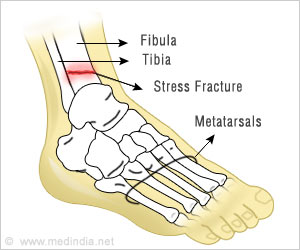
Extended lymph node removal during surgery for localized muscle-invasive bladder cancer does not improve patient survival(1✔ ✔Trusted Source
Standard or Extended Lymphadenectomy for Muscle-Invasive Bladder Cancer
).
The SWOG S1011 phase 3 randomized trial showed no significant benefit in disease-free or overall survival but reported higher rates of grade 3-4 adverse events and an increased risk of death within 90 days post-surgery.The results suggest that standard care for these patients should include a bilateral pelvic lymphadenectomy targeting the external and internal iliac, as well as obturator nodes.
The final results of the SWOG S1011 phase 3 clinical trial, recently published in the New England Journal of Medicine, reveal that patients undergoing surgery for localized muscle-invasive bladder cancer gain no significant survival advantage from extended lymph node removal (extended lymphadenectomy) compared to the standard procedure. Additionally, the extended lymphadenectomy increased the risk of complications and mortality within three months after surgery.
Bilateral Pelvic Lymphadenectomy in Radical Cystectomy
“Bilateral pelvic lymphadenectomy is an essential component of radical cystectomy as it provides local control, accurately identifies pathologic nodal metastases, and is associated with long-term disease-free survival for some patients with proven nodal metastases,” said Seth P. Lerner, MD, principal investigator on the S1011 trial and the Beth and Dave Swalm Chair in Urologic Oncology at Baylor College of Medicine.
“Prior to S1011, however, most academic centers had adopted a more extensive lymphadenectomy based on seminal work by Don Skinner and others. Together with the German LEA trial led by Juergen Gschwend, S1011 addresses a highly relevant surgical question testing whether there is an oncologic benefit to extended lymphadenectomy.”
Lerner is also chair of genitourinary cancer research with the SWOG Cancer Research Network, a clinical trials group funded by the National Cancer Institute (NCI), part of the National Institutes of Health (NIH).
Comparing Standard vs. Extended Lymphadenectomy in Bladder Cancer Surgery
S1011 randomized 618 eligible patients who had predominant urothelial cancer, clinical stage T2–4a, N0–2. All patients had chosen to have a radical cystectomy (surgery to remove the bladder and other cancerous tissue). During the procedure, once the surgical team determined there was no evidence cancer had spread to lymph nodes beyond the standard lymphadenectomy area (the pelvic cavity), patients were randomized 1:1 to receive either a standard lymphadenectomy or an extended lymphadenectomy with additional nodes removed up to the aortic bifurcation.
Advertisement
The median number of lymph nodes removed from patients on the standard arm was 24 versus 39 nodes on the extended arm. The presence and extent of metastases to lymph nodes were similar across the two arms.
With median follow up of 6.1 years, there were no statistically significant differences in disease-free survival or overall survival between patients on the two arms. Five-year estimated disease-free survival was 60 percent on the standard arm and 56 percent on the extended arm (HR=1.10, 95% CI: 0.86, 1.40). Five-year survival was 63 percent on the standard arm and 59 percent on the extended arm (HR=1.13, 95% CI: 0.88, 1.45).
Advertisement
After surgery, roughly 44 percent of patients on the standard arm went on to experience grade 3-5 adverse events (serious side effects) versus 54 percent on the extended arm. Additionally, in the 90 days following their surgery, 2.3 percent of patients on the standard arm died versus 6.5 percent of patients on the extended arm.
To ensure consistent surgical practice throughout the study, each participating surgeon underwent a rigorous credentialing process before registering their first patient, submitting operative and pathology reports and photos taken during radical cystectomies they had recently performed. During the trial, surgeons also submitted intraoperative photos for each patient, and these were reviewed centrally to ensure surgical procedures complied with the trial protocol.
The authors state that the results of S1011 – as with results of similar randomized clinical trials in other disease sites such as gastric and pancreatic cancer – support the argument that prospective clinical trials of this sort should be conducted before more aggressive surgical procedures for treating cancer are widely adopted.
They expect that the S1011 results will establish that a bilateral standard, rather than extended, lymphadenectomy is the standard of care for these patients.
Reference:
- Standard or Extended Lymphadenectomy for Muscle-Invasive Bladder Cancer – (https://www.nejm.org/doi/10.1056/NEJMoa2401497)
Source-Eurekalert



